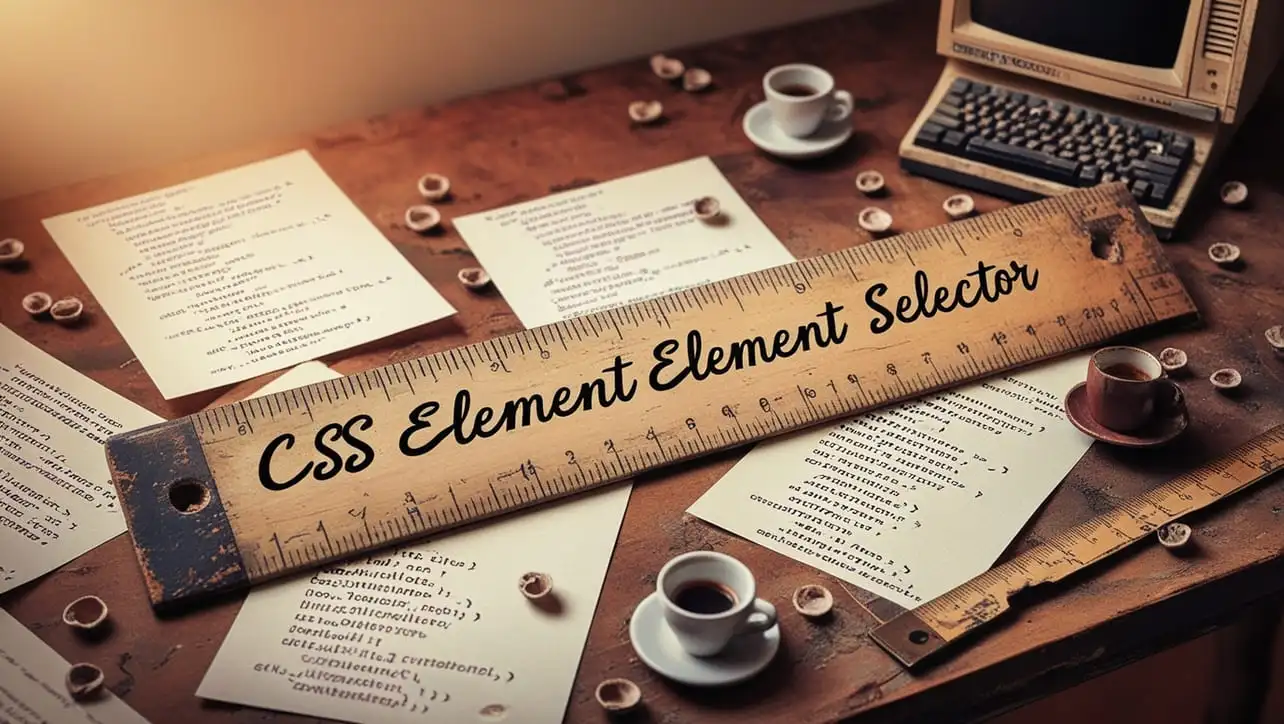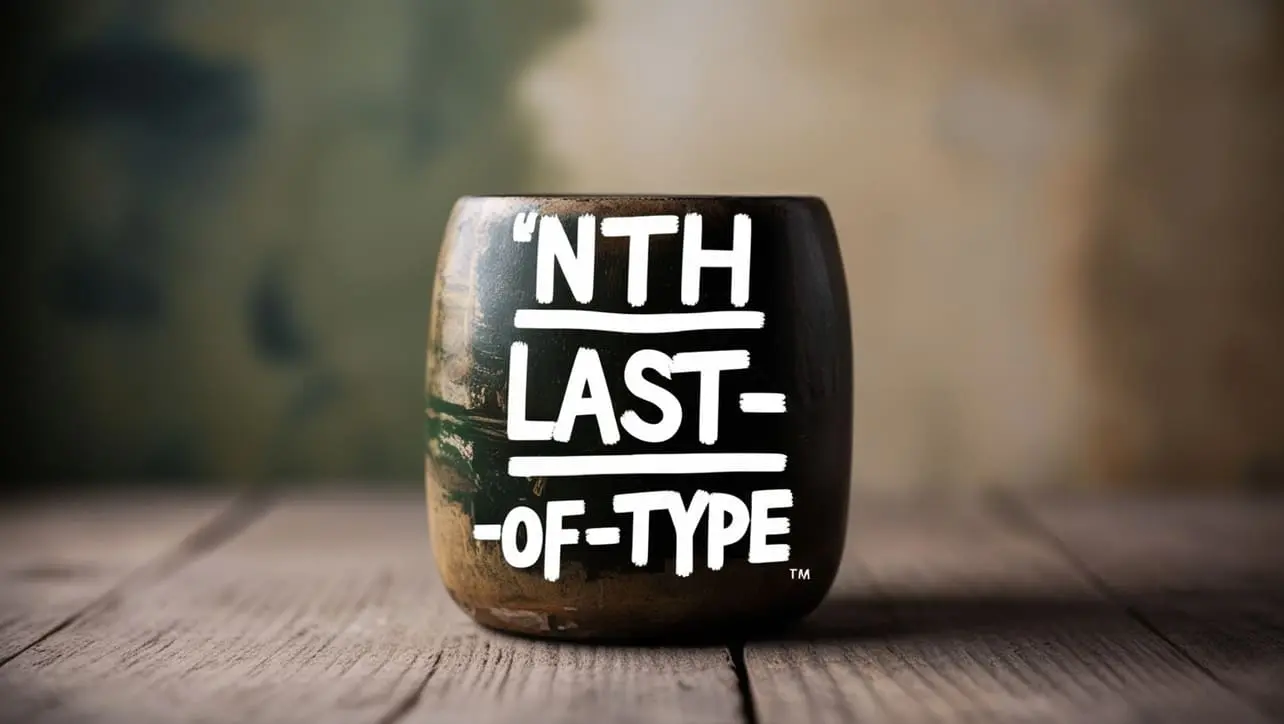
CSS element element Selector
The CSS element element selector selects a specific element within another element, allowing you to style nested elements. It targets child elements only when they appear inside a specific parent. This selector enhances precision in styling complex HTML structures. Perfect for refining web design layout.


CSS element Selector
The CSS element selector targets HTML elements directly by their tag name, applying styles to all instances of that element on the page. It’s simple and widely used for defining consistent styles across elements like headings, paragraphs, or lists. Ideal for basic styling, it’s essential in web design for uniform formatting.


CSS .class Selector
The CSS .class selector targets elements with a specific class attribute, applying styles to multiple elements at once. It’s a powerful way to group and style elements efficiently. This selector begins with a dot (.) followed by the class name, ensuring uniform design across your web pages. Ideal for modern, scalable web development.


CSS #id Selector
The CSS #id selector targets a specific element with a unique ID on a webpage, allowing for precise styling. It’s useful when you want to apply custom styles to one unique element without affecting others. This selector enhances web page control and improves user experience. Perfect for efficient, targeted design.


CSS ::first-line Selector
The CSS ::first-line selector targets the first line of a block-level element. It allows you to apply specific styles, like font size or color, to this initial line, enhancing readability and design. Perfect for styling headers or introductory text, it ensures your content stands out. Ideal for creating visually appealing and engaging web pages.


CSS ::marker Selector
The ::marker selector in CSS targets list item markers, such as bullet points or numbers. It allows you to customize their style, including color, size, and font. Ideal for enhancing list aesthetics, ::marker offers greater control over list presentation. Use it to create unique and visually appealing lists for your website.


CSS * Selector
The CSS * selector, also known as the universal selector, targets every element within a webpage. It’s commonly used for applying global styles, such as resetting margins and padding. This selector is highly versatile and can simplify styling across all HTML elements. Ideal for developers looking to maintain consistency in web design.

![CSS [attribute$=value] Selector](https://codetofun.com/wp-content/themes/codetofun/images/large/css-attribute-dollar-equal-value-selector.webp)
CSS [attribute$=value] Selector
The CSS [attribute$=value] selector matches elements with an attribute that ends with a specific value. It’s useful for targeting elements like links with certain file extensions. This selector enhances control over styling based on attribute values. Optimize your designs with more precise CSS targeting.

![CSS [attribute^=value] Selector](https://codetofun.com/wp-content/themes/codetofun/images/large/css-attribute-selector.webp)
CSS [attribute^=value] Selector
The CSS [attribute^=value] selector matches elements with an attribute whose value starts with a specified string. It’s useful for targeting elements based on partial attribute values, improving flexibility in styling. This selector enhances your ability to apply styles dynamically in modern web design.

![CSS [attribute=value] Selector](https://codetofun.com/wp-content/themes/codetofun/images/large/css-attribute-equal-value-selector.webp)
CSS [attribute=value] Selector
The CSS [attribute=value] selector targets elements with a specific attribute value, allowing precise styling. Ideal for targeting elements based on their attributes, it enhances control over your design. Easily apply styles to elements that meet particular criteria, improving design consistency. Discover the power of attribute selectors to fine-tune your web styling.

![CSS [attribute~=value] Selector](https://codetofun.com/wp-content/themes/codetofun/images/large/css-attribute-tilde-equals-value-selector.webp)
CSS [attribute~=value] Selector
The CSS [attribute~=value] selector targets elements with an attribute containing a specific value. Ideal for styling elements based on their attribute values, this selector helps in applying styles to multiple elements with similar attributes. Enhance your web design with precise styling using this flexible selector. Perfect for dynamic content and complex designs.

![CSS [attribute*=value] Selector](https://codetofun.com/wp-content/themes/codetofun/images/large/css-attribute-start-equal-value-selector.webp)
CSS [attribute*=value] Selector
The CSS [attribute*=value] selector targets elements with an attribute containing a specific substring. It helps apply styles to elements where the attribute value matches part of the provided string. This powerful selector enhances control over styling and improves flexibility in web design. Ideal for dynamic content styling.

![CSS [attribute|=value] Selector](https://codetofun.com/wp-content/themes/codetofun/images/large/css-attribute-or-equal-value-selector.webp)
CSS [attribute|=value] Selector
The CSS [attribute|=value] selector matches elements with an attribute value that either exactly equals a given value or starts with the value followed by a hyphen. It is commonly used for language code attributes like lang=”en”. This selector enhances styling flexibility based on specific attribute patterns. Perfect for targeting grouped attributes!

![CSS [attribute] Selector](https://codetofun.com/wp-content/themes/codetofun/images/large/css-attribute-selector.webp)
CSS [attribute] Selector
The CSS [attribute] selector targets elements based on their attributes. Use it to style elements with specific attributes or values, enhancing your web design’s precision. Ideal for creating dynamic and responsive layouts, this selector improves your site’s user experience. Learn how to leverage the [attribute] selector to elevate your CSS skills.


CSS :has() Selector
The CSS :has() selector is a powerful tool that allows you to style elements based on their descendants. It enables dynamic styling by applying styles to a parent element if it contains specific child elements. Ideal for responsive design and complex layouts, :has() simplifies CSS by eliminating the need for JavaScript. Enhance your website’s visual appeal and interactivity with this advanced CSS selector.


CSS :lang() Selector
The CSS :lang() selector allows you to style elements based on their language attribute. This is ideal for creating multilingual websites where different styles are needed for different languages. Enhance user experience by applying language-specific styles with ease. Leverage :lang() to ensure your content looks great in any language.


CSS :nth-last-of-type() Selector
The CSS :nth-last-of-type() selector targets elements based on their position within their parent, counting from the end. It offers precise control over styling specific elements in a sequence, enhancing layout customization. Ideal for dynamic designs and complex structures, this selector improves both design flexibility and code efficiency. Learn how to utilize :nth-last-of-type() for advanced CSS styling.


CSS :nth-last-child() Selector
The :nth-last-child() selector in CSS targets elements based on their position from the end of their parent container. It allows precise styling for elements in a reverse order, offering flexible design options. Use it to apply styles to the nth element counting from the last. Enhance your website’s design with this powerful selector for improved visual appeal.
